Last weekend I attended a PTQ in Spokane, Washington. I couldn’t do much with the invite, but after playing in the Season Two Invitational I wanted to battle again regardless of the format. It was great to meet people, hang out with everyone, and play some Modern.
I traveled with Josh Ravitz playing Jund Scapeshift, Thea Steele playing RUG Twin, and Brendan Goold, who wanted to play Bogles, but as he put it, his “Bogles guy” gave him the slip and he couldn’t find Daybreak Coronets. He ended up playing Melira Pod instead.
In short, I played boring G/B and I lost playing for Top 8.
My options were nearly unlimited, but I liked Scapeshift, Kiki Control, and Jund the best. After playing some with the Jund deck, I got excited by the idea of cutting red entirely. Lightning Bolt didn’t match up well against Restoration Angel, Deceiver Exarch, Celestial Colonnade, Tarmogoyf, Arcbound Ravager, and a slew of other threats in Modern. Abrupt Decay was basically a given considering how effective it is, but the combination of Bolt and Decay left me weak to a lot of different strategies.
For straight G/B Midrange, I had Reid Duke, Tomoharu Saito, and many others to pull inspiration from. I settled on this list for the PTQ:
Creatures (14)
Planeswalkers (4)
Lands (24)
Spells (18)

Ideally, I would have played a Woodland Cemetery maindeck (over an Urborg, Tomb of Yawgmoth) and a Life from the Loam in the sideboard (probably over the Golgari Charm), but finding cards at the last minute proved to be difficult. I thought the Cemetery was a good idea and the Loam might be a bad one, but now I might never know.
Strategy
This deck aims to disrupt its opponents while clocking them with a threat or two. You don’t need to kill every single creature they play, just the ones that stand in your way. There are general answers to most problematic permanents, but if they have something they could draw into that would pose a threat, the best way to deal with it is by killing them before they draw it.
You will almost never have full control, but there are very few strategies that you don’t have game against.
Creatures
Tarmogoyf and Dark Confidant have been a tag-team duo for years now. I am skeptical of Dark Confidant’s role in that duo (Sorry, Bob!) due to how fast the format is and how ubiquitous Lightning Bolt and Electrolyze are, but for now he’s in.
Drawing extra cards is great, but what happens when you lose a game and you still had a bunch of spells in your hand you never got a chance to cast? At that point, your card advantage didn’t matter, and I’ve been seeing a lot of that lately. Maybe that’s not Dark Confidant’s fault, but if you spent two mana to cast him, didn’t attack or block with him, and then took three damage from him, it might be his fault.
That said, in matchups where they have no creatures and your life total is rarely in danger, Dark Confidant tends to be awesome. However, even against decks like U/R Splinter Twin and U/W/R Control, he can be a liability.
Scavenging Ooze is basically another Tarmogoyf, except on suspend. The fact that a lot of decks in Modern have some graveyard interaction is icing, but even in a vacuum he’d probably make the cut anyway. We are looking for cheap, efficient threats, and Ooze fits the bill. Some lists play four, but the second one is frequently a Grizzly Bear, so I’d stick with three.
Courser of Kruphix is probably the most volatile of all the creatures. There are certain matchups where he is the first card sideboarded out. In others, like U/W/R Control, he can be incredibly important, both for finding you some extra lands, giving you card selection, and giving you a nice life buffer.
Other options, like Phyrexian Obliterator and Thrun, the Last Troll, were so narrow in scope that I didn’t bother with them. While they typically shine in their respective matchups, I had no interest in playing four-drop creatures.
Removal Spells
Disenchant was a maindeckable card in 1996 and that time has come again. Instead, we get the ever-versatile Abrupt Decay to give us what we want. For bigger permanents, like Karn Liberated and Birthing Pod, we have Maelstrom Pulse.
It’s possible that Putrefy is slightly better than Maelstrom Pulse, or that at least a 1/1 split is in order, but I was really worried about my ability to handle planeswalkers, which Putrefy doesn’t do. Planeswalkers are mostly a rarity, but I wanted the majority of my bases covered and Maelstrom Pulse did that for me. I was still worried about my ability to interact with tricksy flash creatures and manlands, but I decided to rely on Dismember and Slaughter Pact for that. Plus, since I was only two colors, I could use Tectonic Edge.
Dismember functioned as my one-mana removal spell and it did that job pretty well. If I could splash for free, I’d likely play 3-4 Path to Exiles instead, but playing Dismember, even with the life loss, was a lower opportunity cost than splashing an additional color.
Slaughter Pact was amazing. Before the tournament, I wasn’t aware how good revealing a Slaughter Pact to a Dark Confidant trigger felt — You get gas and don’t lose any life? The only issue was that it was effectively a three-mana spell, and paying later isn’t always better than paying now.
That’s a topic for the next section though.
Manabase
The mana curve of the above decklist looks like this:
1: 9 (13 counting Treetop Village)
2: 15
3: 11
All in all, that’s not bad – eleven three-drops is kind of scary, but it doesn’t look that bad compared to the versions with Obliterator and Thrun. I could have trimmed the removal a bit, maybe by swapping a Slaughter Pact for a Victim of Night like a lot of other people do, but that didn’t seem right to me either. I think the three-drop you can actually cut is Courser of Kruphix. My removal spells were great, but Courser was the one card whose value fluctuated wildly.
In short, the curve is very good but it could be better. Having a bunch of threes means you don’t get to do two things on turn four and five often enough, and those are the turns where I want to be pulling ahead. This deck has a tendency to start from behind and play catchup quickly, but that is difficult if you’re bogged down with expensive spells. G/B also has no real shortage on things to do with its mana, at least until turn eight or so. Between Scavenging Ooze, Treetop Village, and Tectonic Edge, it was rare that I was truly in topdeck mode.
Without red, I could afford to play a colorless land. While most people choose to play Tectonic Edge, I also wanted to try Mutavault. Perhaps I was overly worried about Liliana of the Veil and didn’t want to give them any good options with it, but I was eventually convinced to run Tectonic Edge.
Mutavault was actually pretty good, but I’m not sure if I’ll continue playing the 3/1 split going forward. If you want to succeed in Modern, you should probably have a gameplan against everything, and cutting Tectonic Edge loses you a lot of percentage points against Scapeshift and Tron.
Sideboarding
Thankfully, most of the sideboarding choices are intuitive. Dark Confidant and Thoughtseize are typically not great against hyper-aggressive decks, Courser of Kruphix isn’t effective against combo decks, and removal spells are only good against decks with creatures.
The discard spells are generally bad in the mirror since the games go long and drawing a few of these in the midgame can be the difference between winning and losing.
Grafdigger’s Cage: Birthing Pod, Goryo’s Vengeance, and anything else graveyard based.
Creeping Corrosion: Affinity and not much else.
Skinrender: The mirror match, Birthing Pod, Zoo, and anything else where you might want a somewhat slow two-for-one.
Night of Souls’ Betrayal: U/R Twin (not RUG, since it’s not very effective against their Tarmogoyf), Affinity, tokens, and anything else where this blanks a significant portion of their deck. Dark Confidant typically comes out in the matchups where this is good.
Drown in Sorrow: Affinity, tokens, and anything else where this can grab a quick two-for-one to catch you back up.
Inquisition of Kozilek: Combo decks and anything else where stealing their best card early is of the utmost importance.
Fulminator Mage: Tron and Scapeshift mostly, but these can also come in against the mirror and Affinity.
Golgari Charm: Good against Pyromancer Ascension and Empty the Warrens. Lots of utility against other decks.
Other cards I considered for my sideboard include:

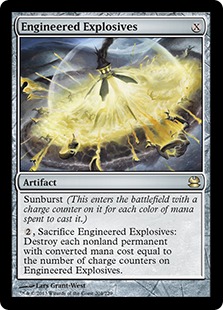
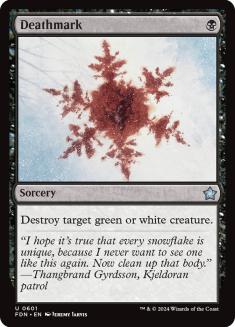
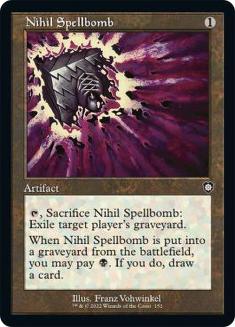

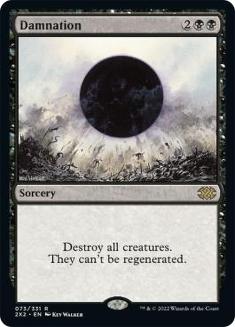
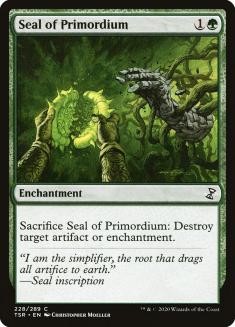
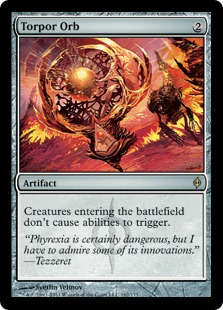
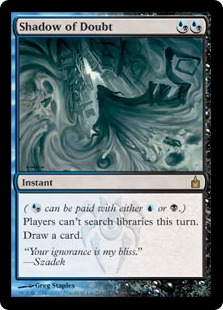
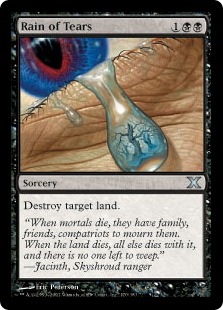
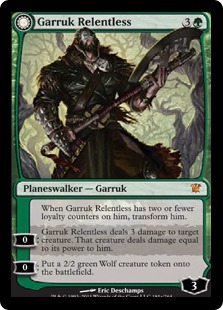
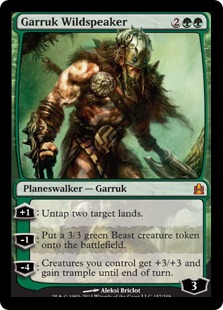
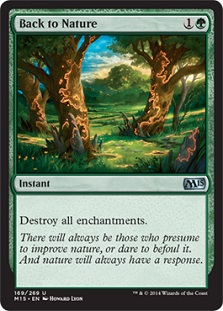
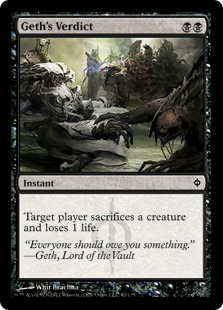
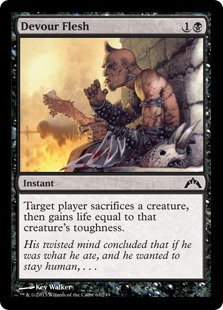
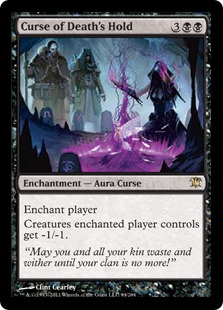
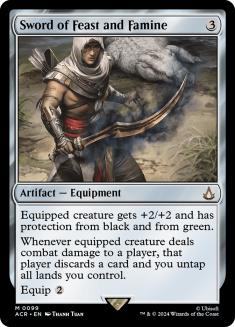
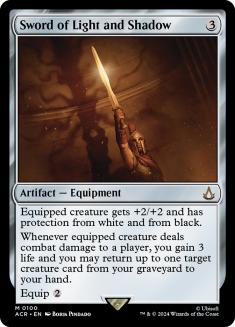
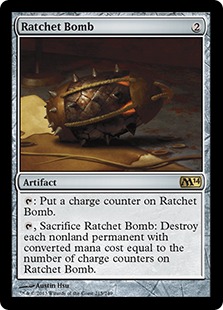
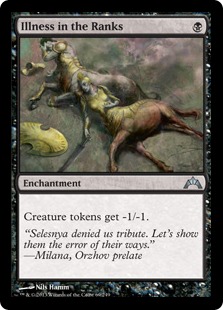
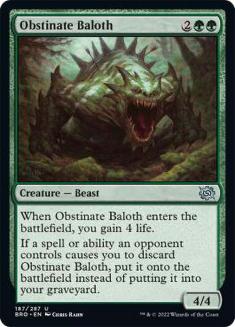
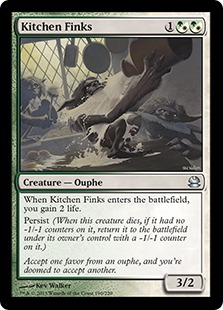
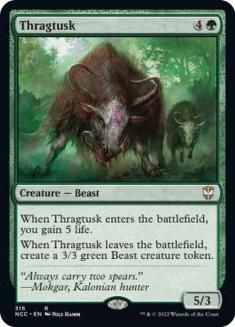
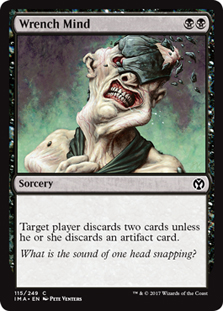
Overall, we’ve got some options.
Cards I knew I didn’t want to play:
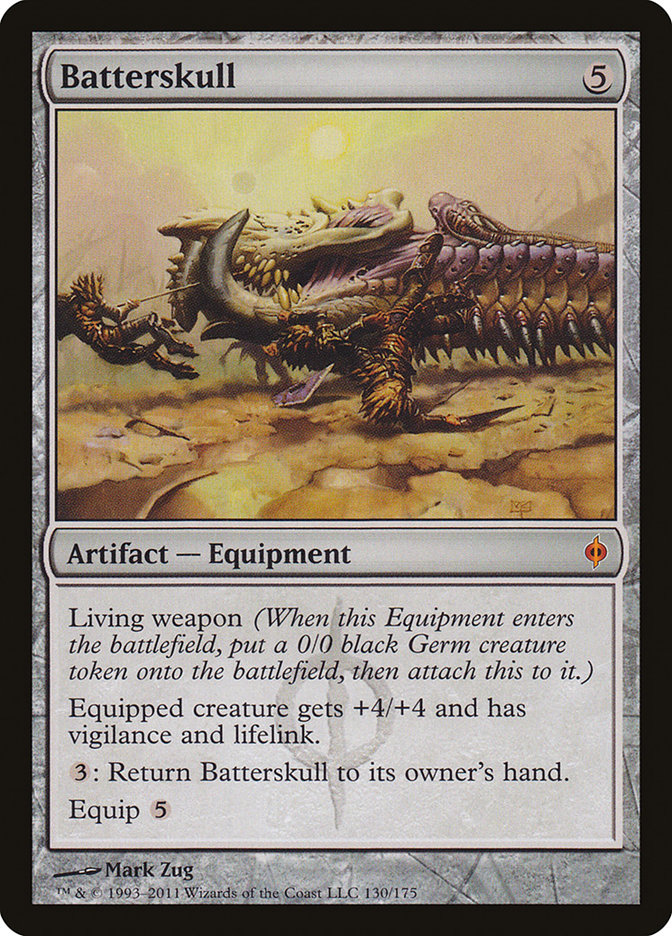
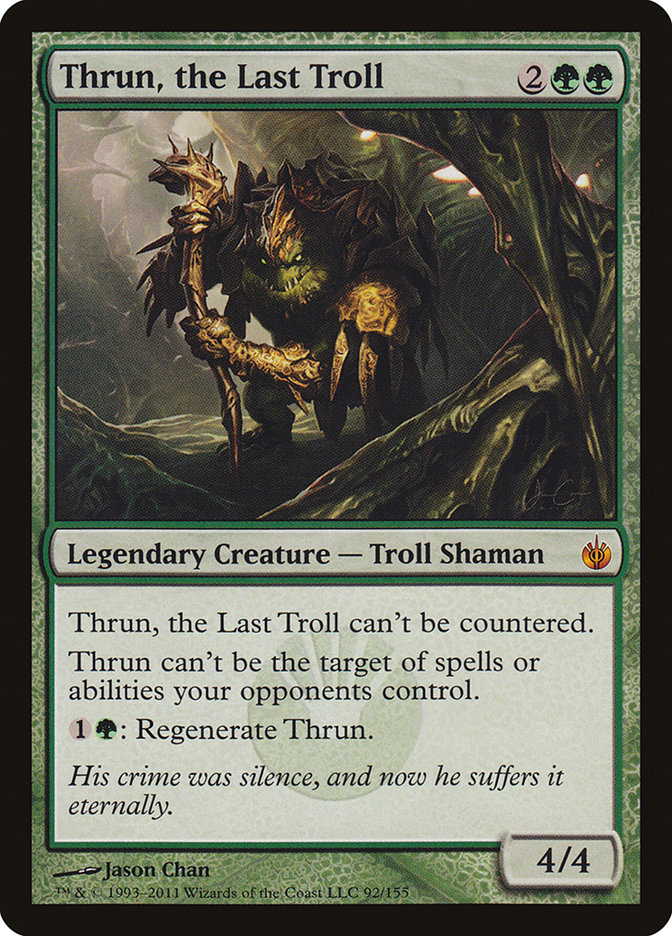
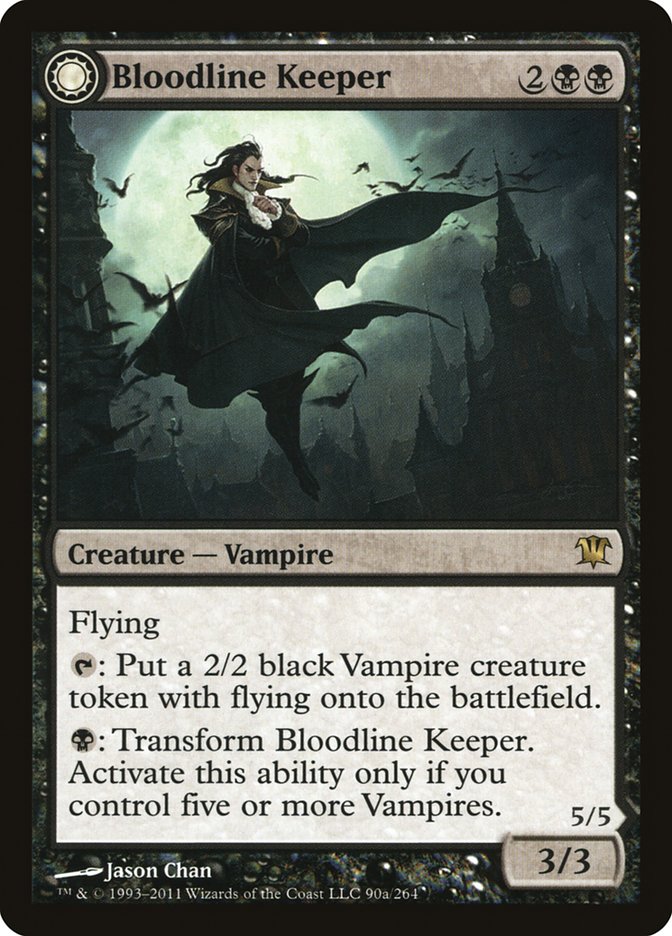
Slow cards might seem like the “trump” for the mirror, but I’ve seen people get harassed by Lliliana of the Veil and Tectonic Edge enough times to know that Batterskull and Thrun are likely not the answers. Bloodline Keeper is probably the best if you’re expecting to play straight mirrors, as Slaughter Pact, Victim of Night, and Abrupt Decay can’t touch it. I’d rather play Skinrender for its slightly better applications against Birthing Pod, specifically against Kitchen Finks.
The Tournament
Round 1: G/B Mirror
In game one, my Dark Confidant lived for a few turns and gave me a significant advantage. In the second game, my Skinrender killed a Dark Confidant and ate a Dismember, which was pretty awesome. My opponent topdecked a few Thoughtseizes in the later turns while I had sided all of mine out except for one. That gave me enough of an advantage that I was firmly in the driver’s seat.
1-0
Round 2: RUG Scapeshift
These games were pretty close, but I managed to win games two and three. Without the land destruction, I would have been dead to a topdecked Scapeshift (or Snapcaster Mage), but since I had the LD, there was nothing he could have done.
2-0
Round 3: U/R Twin
I lost to a Thundermaw Hellkite in a game where I didn’t put enough pressure on him. Fortunately, a timely Night of Souls’ Betrayal locked it up in the third game.
I figured out relatively quickly that I was supposed to be siding out Dark Confidants and not just because I was bringing in Night of Souls’ Betrayals. They typically have a lot of Lightning Bolts, Electrolyzes, and Izzet Charms, so the chances of Dark Confidant living are slim. Even if it does, your life total is under real pressure and you don’t need the extra cards to grind through them.
Dark Confidant is more of a liability against them than anything.
3-0
Round 4: U/R Twin
My opponent was aggressively fetching basic Islands, so I knew that a Blood Moon would likely be in my future. Even though he stuck it, locking me out of black mana, my Liliana was ticking up and eventually ultimated to remove the Blood Moon. From there, it was smooth sailing.
4-0
Round 5: Melira Pod
It was very clear that my opponent, Brad Rutherford, knew his deck very well. In game one, he played a turn-one Birds of Paradise, and I had the option of casting Inquisition of Kozilek or Dismember. I figured that even if he had the Birthing Pod, I could take a creature with Inquisition and Dismember his Birds, potentially slowing him down. However, Dismembering the Birds is basically the same thing except I am guaranteed to slow him down, plus I give myself some additional draw steps to find an answer to his Birthing Pod.
He had the Pod and I got run over.
Game two played out basically how this matchup has to in order for G/B to win. I put some pressure on him while removing his threats. Skinrender on Kitchen Finks was key in my being able to turn the corner from being behind into being ahead.
In the final game, Brad mulliganned, and I Thoughtseized his Birthing Pod, leaving him with a Noble Hierach in play, another in his hand, and no other action aside from a Gavony Township. With a Maestrom Pulse in my hand, I was pretty confident that I was winning that game.
On turn two, I played Dark Confidant, while he passed with Gavony Township mana available. I paused for a bit, but ultimately still decided to Maelstrom Pulse his Noble Hierarchs. He responded by Chord of Calling for two and finding a Viscera Seer, effectively countering my Maelstrom Pulse.
A much better play would have been to Inquisition him and cast a Tarmogoyf. If he had nothing, he would likely use Township end of my turn, then again on his turn and attack with a Noble Hierarch. That would give me a better window to Maelstrom Pulse his two Hierarchs if I still wanted to.
However, those Hierarchs weren’t exactly huge threats, at least not at that point. I definitely could have held the Pulse for longer, protecting myself against a topdecked Birthing Pod. As it played out, he did peel the Birthing Pod and I found myself behind again.
The game went on for a few more turns, but Birthing Pod into Reveillark was able to finish me off since Dark Confidant had dealt me a decent amount of damage.
4-1
Round 6: Storm
My opponent was proficient with his deck, but basically every card in my deck is great against him.
5-1
Round 7: Affinity
I was eager to test out my plan against Affinity and figured I’d get a chance to eventually since there seemed to be a lot of it in the room. Instead, I mulliganned to five twice, and while the games were competitive, I didn’t really have a shot.
5-2, drop
Overall, I was very pleased with the deck and would recommend it to anyone. That said, I will likely play something else in Modern if I get the chance just to test a different deck. This is the list I would play going forward though:
Creatures (13)
Planeswalkers (4)
Lands (25)
Spells (18)

This list is much cleaner, and while dirtying up the sideboard might be beneficial against a slew of different decks, the PTQ I went to featured the top decks way more than anything else. The slight changes – such as the eighth discard spell maindeck, the removal of a Courser, and the tightening of the sideboard – were all a reaction to the matchups I played against in the PTQ. If those are the big decks (and I think they are), then this deck appears to be a large favorite.
It didn’t look like there were many Jund, Junk, or G/B decks at the tournament, which is strange. I felt totally in control in most of my games and the deck performed well. Jund used to be the most popular deck by a wide margin, and while the loss of Bloodbraid Elf and Deathrite Shaman certainly weakened the deck, it’s still very good.
Maybe the lack of Jund means I should sleeve up Nivmagus Elemental again.
